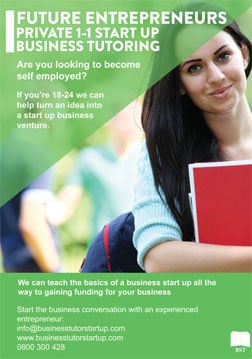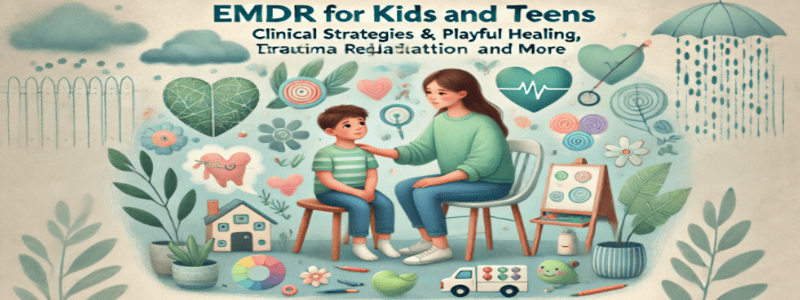Ana Gomez, MC, LPC, Christine Mark Griffin- EMDR for Kids and Teens: Clinical Strategies & Playful Pathways for Trauma Healing, Emotional Regulation and More
Program designed to equip mental health professionals with essential tools and techniques to help children and adolescents heal from trauma using EMDR (Eye Movement Desensitization and Reprocessing)
Overview
Sale page: EMDR for Kids and Teens: Clinical Strategies & Playful Pathways for Trauma Healing, Emotional Regulation and More By Ana Gomez, MC, LPC, Christine Mark Griffin…
Archive: https://archive.is/UPKZR
Content from Sale page:
Course Curriculum
Start with the foundations of using EMDR with kids. In module two, explore how to integrate play therapy into the 8 phases of EMDR. Then, dive into using trauma-informed yoga with kids. Lastly, gain specific skills to overcome treatment barriers when using EMDR and Play Therapy together.
Step-by-Step EMDR for Kids
with Christine Mark Griffin, LCSW
Start by learning how to make each phase of EMDR treatment kid-friendly. You’ll learn how to make EMDR more accessible, effective and even fun with kids and teens in this engaging module.
The Kid-Friendly Introduction to EMDR
Explaining trauma in safe and “unscary” ways
How and why EMDR is helpful, psychoeducation for parents
The Adaptive Information Processing (AIP) Model
8 phases of EMDR; what to expect from treatment
Interventions: The Tornado of Trauma, Windows of Tolerance
EMDR-Based Case Conceptualization: Integrating Child and Parent Perspectives
How work with lack of parental involvement
Spotting adaptive versus maladaptive information processing
What to do when you’re stuck as a clinician
Phase-by-Phase EMDR Interventions for Kids
Phase One: Learning the Story
Holding different versions of the same story in the family
Considering intergenerational trauma, attachment trauma, and vicarious trauma
Identifying target memories, negative cognitions with kids and parents
A spectrum of parent involvement in therapy treatment
Interventions: Graphing Strengths & Targets, Preparation for Story Telling Technique
Phase Two & Three: Setting the Goals and Activating Targets
How to develop individual and shared goals for children and caregivers
Future-focused interventions
Identifying unhelpful thoughts, emotions, and more
Phase Four: Discharging the Stress
Introducing bilateral stimulation
Help kids create more space and less body stress
Phase Five: Strengthening the Positive
Creating resilience for the future
Replacing maladaptive thoughts with confidence
Creating internal security
Phase Six: Increasing Body Awareness
Help kids release memories stuck in the body
Get kids more comfortable feeling uncomfortable emotions
Phase Seven: Finishing & Ending
Ideas for calming and fun ways to close sessions
Help parents know what to do in-between sessions
Setting expectations for the next session
Phase Eight: Reviewing and Revising
How to assess progress
Keeping your young clients sharing
Know when to stop and when to continue working
Integrating EMDR and Play Therapy
with Ana Gomez, LPC
Combine the skills you gained in part with as you learn how to integrate the 8 phases of EMDR into play therapy. You’ll gain specific training in how to do Sand Tray therapy, incorporate Parts Work, and even Polyvagal-Inspired exercises.
The Choreography of EMDR therapy with Kids
A circular view of EMDR Therapy
“EMDR on the ground”
Inviting movement into EMDR
Integrating Play, Movement, Expressive Arts, Polyvagal, and Parts Work Approaches
Breaking own each of the EMDR phases
Using EMDR & Sandtray Therapy Together
3 Levels of Distance Using EMDR Therapy and Sandtray
Strategies for Initial and Processing Phases of EMDR Treatment
Extensive Lens to View Client’s Clinical Landscape
Parent-child interventions for collaboration
Mirroring in Trauma Treatment
Implicit and explicit mirroring
Interpersonal and intrapersonal impact of mirroring
Being the companion, co-regulator and co-creator of meaning
How to meet developmental needs
Balance being a witness with being an active participant
Skillfully Work with Kids’ Inner Defenses
Helping parts be storytellers and storyholders
Creating harmony with conflicting feelings
Working with shame
Integrating Somatic Interweaves
Understanding somatic interweaves
Questions to ask and areas to explore
Meeting unmet attachment needs and bringing resources
Memory integration
Removing Barriers to Treatment with EMDR & Play Therapy
with Ana Gomez, MA, LPC
Some challenges in therapy are just simply hard. Here’s a roadmap to overcoming some of the most common (and uncommon!) challenges faced by clinicians as they use EMDR to enhance therapy with kids and teens.
Working with Kids’ Self-Protective Systems
The impact of complex trauma on self-organization
The role of shame and “defenders”
Understanding the defense cascade continuum
Strategies to work with each attachment style
Using multi-motivational theory to treat various areas of trauma
Breaking Through Dissociation in Kids
Curiosity as the remedy
Exploring and visiting “inner parts” to cultivate awareness
How to Physicalize inner pain
Using the power of stories and analogies
BONUS! 3 FREE CE Trainings — $309.97 VALUE!

Our gift to you and your clients!
Making Mindfulness Stick with Kids & Teens
Making Mindfulness Stick with Kids & Teens
Christopher Willard
Join world-renowned speaker, author, and Harvard faculty member Christoper Willard for an unforgettable training on how to make mindfulness REALLY work with your young clients. Dive into three learning hours on…
What is Mindfulness really?
Mindfulness without meditation
Adapting mindful skills for children and teens
Engaging children and teens in mindful awareness for creating change beyond the therapy room
Walk away with highly applicable skills to use tomorrow!
EMDR & Trauma-Informed Yoga for Kids
EMDR & Trauma-Informed Yoga for Kids
Christine Mark Griffin, LCSW & Zabie Yamasaki, MEd, RYT
Movement is one of the most impactful ways to work with young clients. In this module, you’ll explore how to use trauma-informed yoga and EMDR to strengthen kid’s ability to hear their inner voice and express themselves in healthy ways.
Brief Overview of the Frameworks
Kid-Friendly Explanation of the 8 Frameworks of Trauma-Informed Yoga & The 8 Phases of EMDR
Getting parents on-board
Integrative Child-Friendly Practices for Healing the Mind, Body, and Heart
Getting prepared
Breathwork and mindfulness
Supporting kids who are triggered
Cultural considerations and accessibility
Help Children Gain Insight and Strengthen Their Minds
Safe Calm Place
Identifying Unhelpful & Helpful Thoughts
Psychoeducation about Window of Tolerance
Surrender Bowl
Increase Emotional Regulation and Align with Expressing What Is In Their Hearts
Resource Development Intervention — Happy Place
Chakra for Kids & Inner Light Meditation
Take what you need board & intention stones
Utilize Movement to Enhance Physical Strength and Attunement to Their Bodies
Child-friendly body scans
Games and activities for bilateral stimulation and discharging stress
Increasing body awareness + helping with ouches
Vinyasa — flow yoga
EMDR Back & Forth movement to move the trauma out & move the healing in
Superheroes, Video Games & Creating Epic Adventures for Kids in Therapy
Superheroes, Video Games & Creating Epic Adventures for Kids in Therapy
Sophia Anasari, PLCC, RPT™
Josué Cardona, MS
Therapy can be fun. Sophia and Josué are the perfect clinicians, advocates, and unique voices in psychotherapy to help you make therapy not only more effective but highly engaging for your young clients. Their unique approach, termed Geek Therapy will be sure to deliver results, greater alignment with clients, and enhanced engagement.
Incorporate your Client’s Interests
Video games, comic books, anime, and MORE into therapy
Therapeutic Power of Storytelling
Help clients discover they are the heroes of their own stories
Explore the Dynamic and Engaging World of Video Games
Minecraft and other Video Games are the New Virtual Sandtray
Connect more deeply with your clients now!
Review by Excours:
EMDR for Kids and Teens: Clinical Strategies & Playful Pathways for Trauma Healing
Course Overview
This course, designed by Ana Gomez, MC, LPC, and Christine Mark Griffin, provides clinicians with practical strategies for using Eye Movement Desensitization and Reprocessing (EMDR) to help children and teens heal from trauma. The course emphasizes playful and creative approaches to help young clients with emotional regulation, trauma healing, and more. You will gain essential tools and techniques to work effectively with children in a therapeutic setting.
Why Choose This Course?
This course is a must for clinicians who work with children and teens dealing with trauma, anxiety, and emotional regulation challenges. It offers a unique combination of clinically-proven strategies and playful pathways that make therapy approachable and engaging for younger clients. The course stands out due to its focus on practical, hands-on techniques that can be immediately applied in real-world therapy settings.
Key Benefits of the Course
- Learn to integrate playful strategies with EMDR techniques.
- Improve emotional regulation and trauma recovery for children and teens.
- Gain creative approaches to therapy that engage young clients.
- Immediate, hands-on tools to use in clinical practice.
- Led by expert instructors with deep experience in child and adolescent therapy.
Course Description
This course provides an in-depth look at how EMDR therapy can be adapted for children and teens. It covers a range of topics including trauma healing, emotional regulation, and creative therapy techniques. The course explores how clinicians can use playful approaches to make therapy more accessible and effective for young clients. Through lectures, case studies, and practical exercises, you will learn how to tailor EMDR interventions for younger populations.
Who Should Take This Course?
This course is ideal for mental health professionals such as licensed counselors, psychologists, therapists, and social workers who work with children and adolescents. It’s particularly suited for practitioners who want to expand their therapeutic toolbox and incorporate playful, engaging methods to help young clients process trauma and regulate their emotions.
About the Instructor
Ana Gomez, MC, LPC, is an internationally recognized expert in child and adolescent therapy, with a focus on trauma recovery and emotional healing. She is joined by Christine Mark Griffin, an experienced therapist and educator who specializes in creative therapy interventions. Together, they bring a wealth of knowledge and practical expertise to this course.
Keywords
- EMDR for children
- Trauma healing for teens
- EMDR therapy for kids
- Child trauma recovery
- Emotional regulation in children
Testimonials
“This course transformed my practice with young clients. The playful strategies really help them open up and process their trauma in a safe and engaging way.” – Sarah M., Licensed Counselor
“I’ve been able to use the tools from this course immediately in my sessions. The hands-on approach is incredibly effective.” – John R., Clinical Therapist


